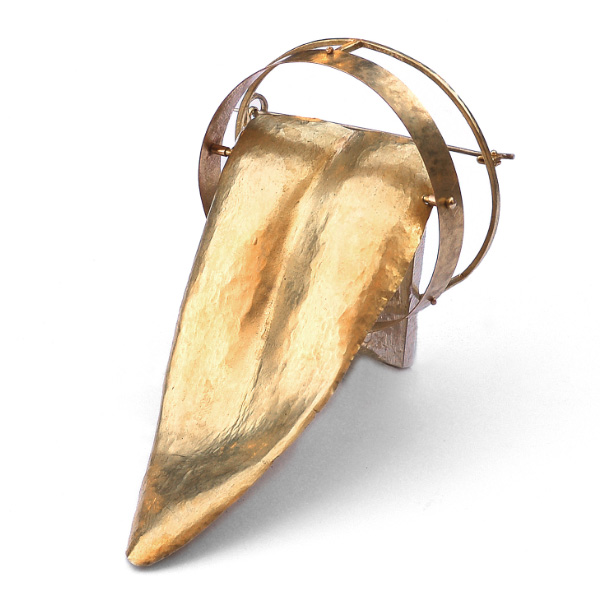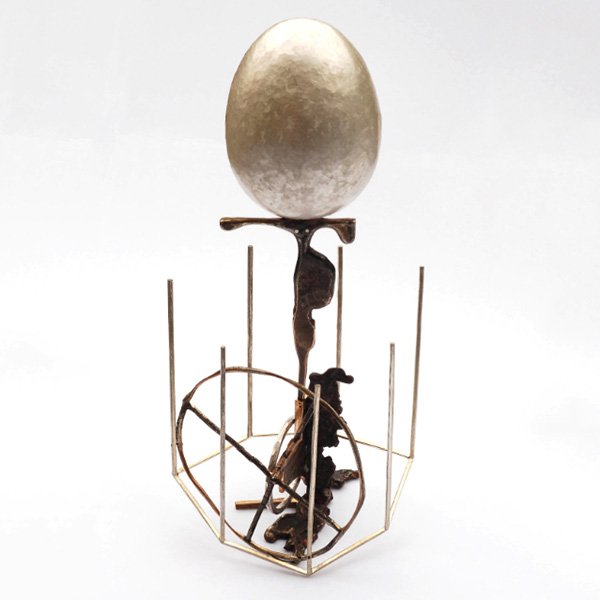Stefano Marchetti: Crime stories 1

 Oggi mi sento un po’ come nella serie tv Alfred Hitchcock presents. Io vi presento da stasera storie di mistero, arte, scienza e fantasia by Stefano Marchetti. Sono suoi piccoli racconti legati da un filo narrativo (pubblicati qui in esclusiva in questa forma) che fanno comprendere meglio ciò che è dietro alle sue opere più “difficili” da decifrare (alcune presentate alla galleria Marzee quest’anno), che illuminano con aneddoti, aggiungono un pizzico di “crimine”, sorprendono con esperimenti tra la scienza e il sogno. Lascio quindi a Stefano Marchetti la scena. Stacchetto musicale…
Oggi mi sento un po’ come nella serie tv Alfred Hitchcock presents. Io vi presento da stasera storie di mistero, arte, scienza e fantasia by Stefano Marchetti. Sono suoi piccoli racconti legati da un filo narrativo (pubblicati qui in esclusiva in questa forma) che fanno comprendere meglio ciò che è dietro alle sue opere più “difficili” da decifrare (alcune presentate alla galleria Marzee quest’anno), che illuminano con aneddoti, aggiungono un pizzico di “crimine”, sorprendono con esperimenti tra la scienza e il sogno. Lascio quindi a Stefano Marchetti la scena. Stacchetto musicale… Today I feel as if I were in the TV series “Alfred Hitchcock presents”! Starting from tonight I will present you some stories full of mystery, art, science and fantasy written by Stefano Marchetti. These short stories – published exclusively here in this version – are linked by a narrative trend, which helps understand his most “complex” and incomprehensible works (some of which on display this year at the Marzee Gallery). They unveil anecdotes, add a little “suspense” and surprise with experiments suspended between science and dream. I’ll step aside now, leaving space to Stefano Marchetti. Let the music begin to play…
Today I feel as if I were in the TV series “Alfred Hitchcock presents”! Starting from tonight I will present you some stories full of mystery, art, science and fantasy written by Stefano Marchetti. These short stories – published exclusively here in this version – are linked by a narrative trend, which helps understand his most “complex” and incomprehensible works (some of which on display this year at the Marzee Gallery). They unveil anecdotes, add a little “suspense” and surprise with experiments suspended between science and dream. I’ll step aside now, leaving space to Stefano Marchetti. Let the music begin to play…
Lingua / Tongue, Stefano Marchetti
 Nella mia produzione artistica, la lingua d’oro è un pezzo atipico. Inizialmente ho pensato a questo lavoro come a qualcosa fatto solo per me stesso, da non mostrare in pubblico. Ero uso lasciarlo sopra al tavolo da lavoro, una sorta di metafora sul potere della parola e su come la lingua possa essere allo stesso tempo un’arma di ingannevole seduzione o di nobile persuasione. Alla fine mi è impossibile ignorare che a Padova, la mia città, è esposta la lingua di Sant’Antonio. Questa reliquia è una presenza troppo familiare per noi Padovani, per non supporre che abbia avuto qualche influenza, anche se inconsapevole, sulla realizzazione del pezzo. Per una serie di fortunate coincidenze questo lavoro è ora conservato in un museo, non lo avrei mai immaginato in quel contesto. Destino delle lingue.
Nella mia produzione artistica, la lingua d’oro è un pezzo atipico. Inizialmente ho pensato a questo lavoro come a qualcosa fatto solo per me stesso, da non mostrare in pubblico. Ero uso lasciarlo sopra al tavolo da lavoro, una sorta di metafora sul potere della parola e su come la lingua possa essere allo stesso tempo un’arma di ingannevole seduzione o di nobile persuasione. Alla fine mi è impossibile ignorare che a Padova, la mia città, è esposta la lingua di Sant’Antonio. Questa reliquia è una presenza troppo familiare per noi Padovani, per non supporre che abbia avuto qualche influenza, anche se inconsapevole, sulla realizzazione del pezzo. Per una serie di fortunate coincidenze questo lavoro è ora conservato in un museo, non lo avrei mai immaginato in quel contesto. Destino delle lingue. Within my artistic production, the golden tongue is an uncharacteristic piece. Initially I only thought of it as something for myself, not to be shown to the public. I used to keep it on top of my working table, a kind of metaphor about the power of speech, and of how a tongue can be a weapon both of deceptive seduction and of noble persuasion.
Within my artistic production, the golden tongue is an uncharacteristic piece. Initially I only thought of it as something for myself, not to be shown to the public. I used to keep it on top of my working table, a kind of metaphor about the power of speech, and of how a tongue can be a weapon both of deceptive seduction and of noble persuasion.
In the end it got impossible for me to ignore that Padua, my city, hosts Saint Anthony’s tongue. It represents a presence too familiar to Padua citizens for not supposing it had an influence (albeit unaware) when I made it. It’s funny to think my piece is now preserved in a museum, I would never have imagined it in that context. Destiny of tongues.

Omaggio a Giovanni Dondi dell’Orologio
Homage to Giovanni Dondi dell’Orologio, Stefano Marchetti
 Questo lavoro è stato ideato per una mostra dedicata alla Padova medievale.
Questo lavoro è stato ideato per una mostra dedicata alla Padova medievale.
Ho scelto di indagare il pensiero di Giovanni Dondi dell’Orologio, noto soprattutto per aver ideato un astrario, elegante congegno che riproduceva i moti dei pianeti del sistema solare e misurava anche le ore. Nella sua invenzione è possibile intravvedere chiaramente lo spirito che ha traghettato l’occidente medievale verso la modernità. Infatti l’affascinante anche se superato modello Tolemaico che sta alla base della progettazione dell’astrario, diventa nel lavoro di Giovanni Dondi un mezzo per la sperimentazione di nuove idee, come ad esempio l’approssimazione ai secondi nella misurazione del Tempo. Da un modello “inesatto” viene originato un nuovo modo di rapportarsi con le misurazioni, in uso ancora oggi. Da orafo ho ritenuto che l’astrario potesse essere un contenitore perfetto per la mia indagine-racconto, un legante tra l’estetica orafa della Padova del ‘300 e quella contemporanea. Per la messa in opera ho impiegato le stesse leghe metalliche utilizzate nelle monete padovane del tempo: dalla “mistura” dai primi conii Carraresi del 1328, alle leghe più ricche di argento del 1390. Le varie leghe ottenute mi hanno permesso di rendere un effetto tonale, e di “scaldare” visivamente il metallo. Mi è piaciuto pensare a Giovanni intento ad ideare qualcosa di grande, ma con pensieri rivolti anche alla semplicità del quotidiano: i pensieri di un uomo che la leggenda vuole anche aver portato a Padova una razza di galline dal caratteristico ciuffo, più tardi conosciuta come gallina padovana. Ho immaginato una possibile bozza d’astrario primitiva e surreale, alla Magritte, piuttosto che il risultato compiuto di un preciso progetto. Mi sono figurato Giovanni a letto, febbricitante, mentre immaginava qualcosa a metà tra uno schema tecnico e l’evocazione di un sogno: il sogno di una gallina.
 This work has been conceived for an exhibition dedicated to Medieval Padua.
This work has been conceived for an exhibition dedicated to Medieval Padua.
I chose to investigate the thinking of Giovanni Dondi dell’Orologio, reknown for having built an astrarium, elegant contraption that reproduced the movements of the planets of the solar system and measured time as well. In his invention one can clearly see the spirit that carried our Medieval culture towards modern times. In fact the basis for the astrarium, the fascinating, yet obsolete, Ptolemaic model of the solar system, becomes Dondi’s vector in experimenting with new ideas, like the approximation to the seconds in measuring Time.
From an “incorrect” model, a more “correct” way of measuring finds its origin, a way that is still in use today. As a goldsmith I figured that the astrarium would be the perfect container for my research-story, a link between the aesthetics of the Paduan goldsmithing of the 14th century and the contemporary one. In the building of my work, I used the same alloys used for the Paduan coins of that time: from the early “mistura” (mix) of the Da Carrara coinage (1328), to the alloys richer in silver of 1390.
The different alloys so obtained, allowed me to convey the effect of colour shades, and visually “heat up” the metal. I like to think Giovanni Dondi bent over the making of something great, but with humble thoughts too… the thoughts of a man that, as legend has it, brought to Padua the famous chicken with a tuft, later called “Paduan chicken”. I imagined the early phase of a primitive sketch for an astrarium, quite surreal, à la Magritte, rather then the final result of a precise project. I pictured Giovanni sick in bed, and with the raising of his temperature, he imagines something between a technical blue print and the conjuring up of a dream: the dream of a chicken.







Discussion about this post